
Why you need an OBD scanner in your toolbox
OBD scanners have become an essential part of the home mechanic’s toolkit, with the ability to read engine fault codes crucial to diagnosing and repairing modern cars and vans.
Are OBD scanners worth it? They're the fastest way to troubleshoot a problem. Without an OBD reader, you'll have to visit a garage to have the fault code identified for you – and with hourly labour rates at independent garages averaging around £50, that's something none of us wants to do. Pair an OBD fault code reader with our new online guide Haynes AutoFix and you will be able to diagnose and repair most common faults and electrical issues at home with simple tools.
There's a huge variety of OBD readers out there, but they all perform the same basic functions. Crucially, many of them cost less than the price of that trip to the garage – but which is the best OBD reader for you? We've put eight to the test, ranging in price from £13 to nearly £250*.
What is an OBD reader?
An OBD reader has traditionally taken the form of a handheld diagnostic computer that communicates with your car’s brain to diagnose fault codes, among other things. You can pay as little as a tenner for an OBD scanner and as much as hundreds of pounds – with the latter offering a multitude of features – but whichever you choose, they should all have the same minimum requirements, and be able to:
- Communicate with the vehicle
- Read fault codes
- Clear fault codes
Note, however, that most OBD scanners won’t turn off service lights or reset oil life management monitors including ABS, SRS etc – but Haynes AutoFix will take you through the process of doing this.
How OBD works
OBD stands for on-board diagnostics, and refers to a port that looks a little like an old-fashioned TV SCART socket. OBD ports have been fitted to all petrol passenger cars sold since 1 January 2001 and all diesels from 2004. This 16-pin socket is referred to as OBD2 outside of Europe and EOBD in Europe.
The OBD socket also provides power, so there’s no need for the OBD scanner to have its own electricity supply, via batteries or a lead.
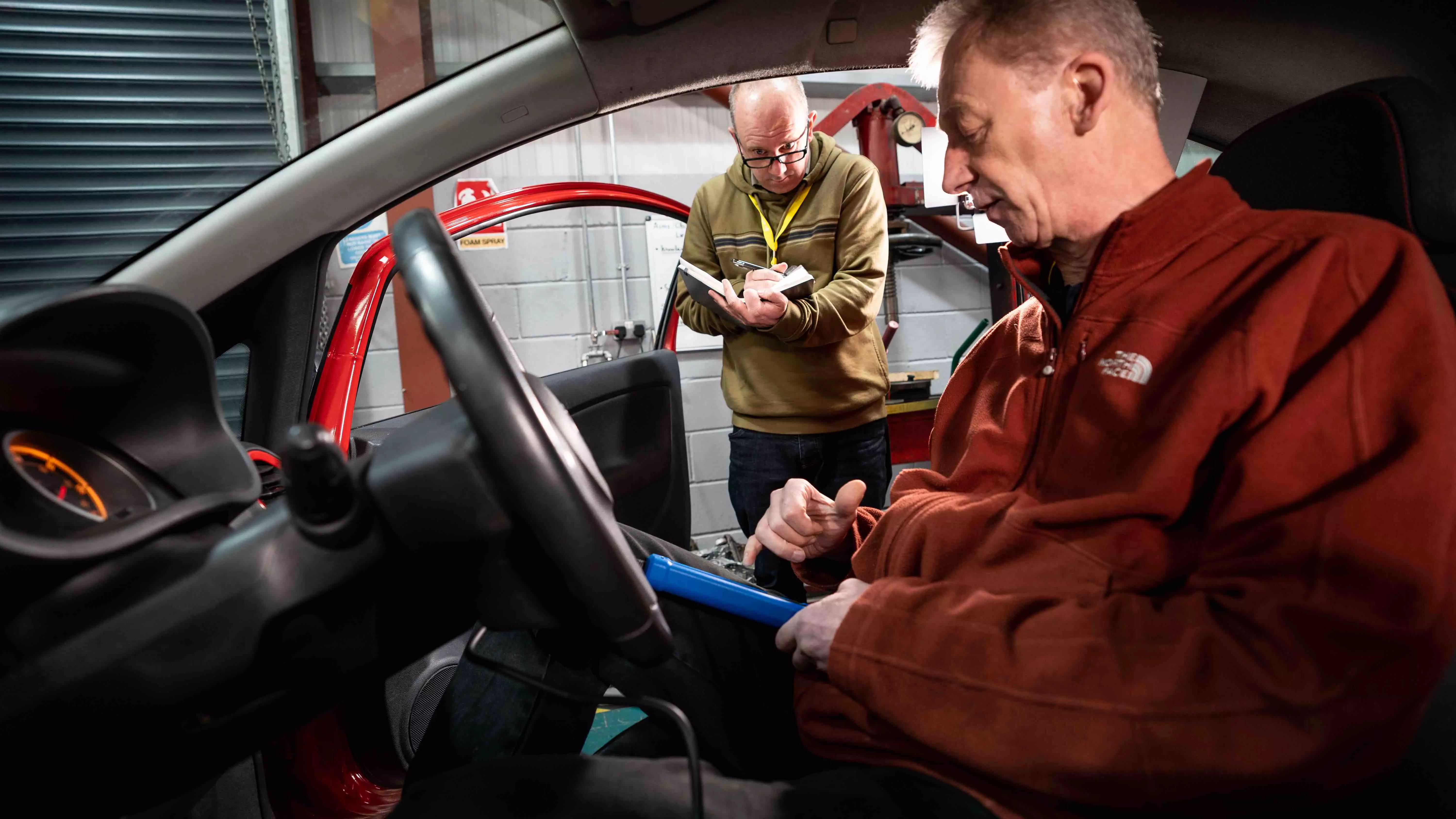
Where is OBD port located?
Wondering where the OBD port is on your Ford Focus or Honda CR-V, for example? Look for your OBD socket on the driver’s side, beneath the steering column. It may be immediately below the column or to one side – and is sometimes covered by an access panel. If you can’t find it on the driver’s side, it may be low down on the centre console, in front of the gear lever (in the case of our Vauxhall Corsa test car) or lower down in the passenger footwell.
You’re unlikely to find any information about your car’s OBD port in the vehicle’s handbook because manufacturers prefer their dealer networks to carry out diagnostic work (at potentially great expense to you!).
Which OBD app is best for iPhone and Android?
Our group test of OBD scanners (below) includes a Bluetooth scanner, the iCAR Pro Scan. Its eBay listing recommended various OBD apps for iOS and Android: Viecar (free but we couldn’t get it to work on our iPhone), OBD Fusion (£9.99 iOS/£4.99 Android), Engine Link (5.99 iOS), Torque Pro (£2.95, Android) and more.
We settled for Car Scanner (free for iOS and Android, with in-app purchases), but other well-rated options include OBD Auto Doctor (free to download, with in-app purchases), Infocar (free for iOS and Android), ODB Mary and OBD Arny (both free, Android, with in-app purchases.
Which OBD app works best on your phone and Bluetooth scanner will be a matter of trial and error for you.
What OBD scanner do I need? OBD readers tested
Click below to view our Top 8 Best Fault Code Readers video on YouTube (test was conducted in 2022, so check back here for 2024 prices)…
…or read on to see which OBD scanners win this test
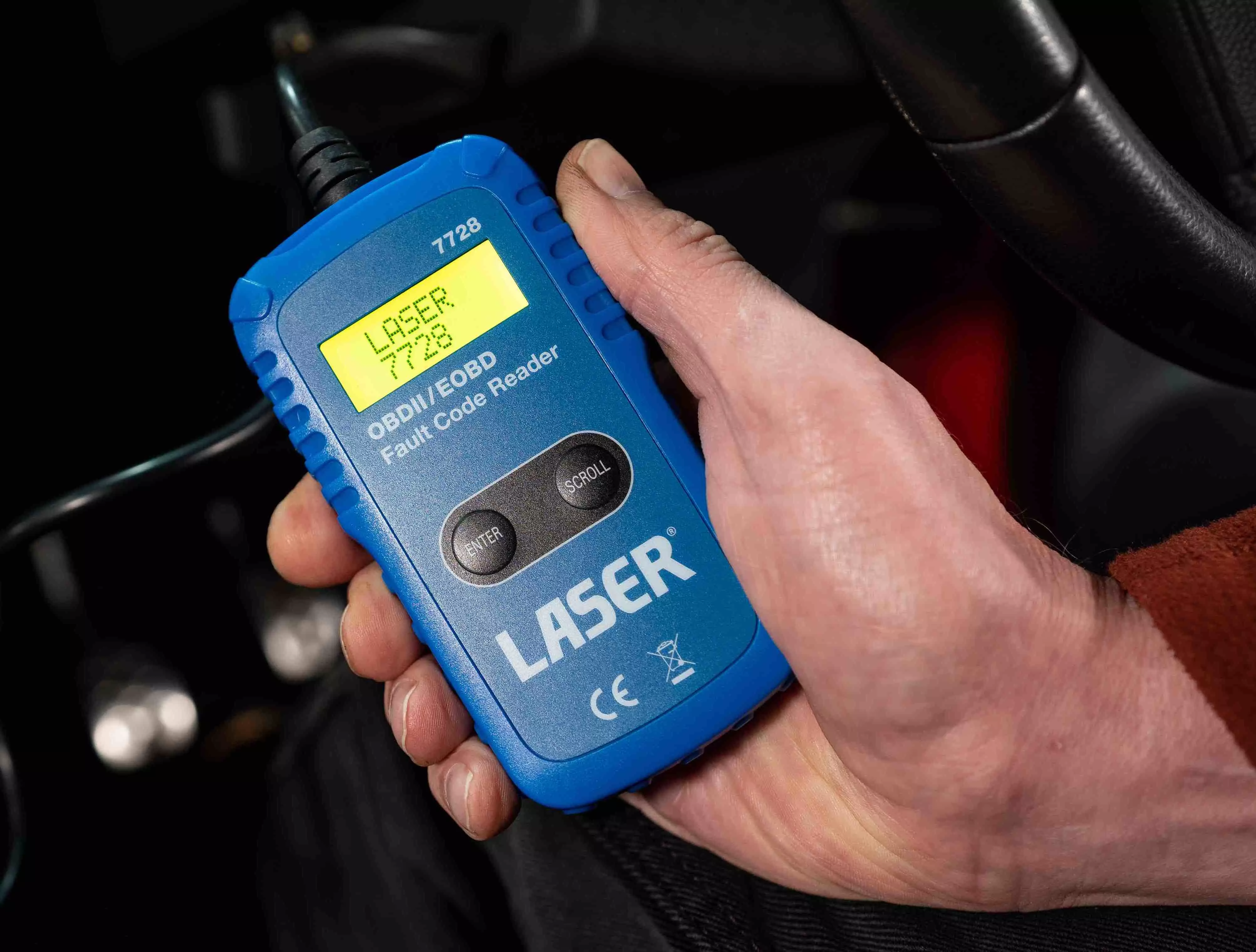
Laser Fault Code Reader (7728), £53.74 from Laser Tools
✅ Simple to use
✅ Performs basic functions
❌ Small screen
❌ Some rivals have more features
A simple yet effective OBD reader, the Laser 7728 doesn’t show live data or have freeze frame, and the screen’s small size means there’s lots of button-pressing involved.
However, it did what it was meant to do, which includes turning off the engine malfunction indicator light and VIN check, and there are printed instructions in the box. As with all of the wired code readers in this test, the 7728’s screen is backlit, so you won’t have to worry about not being able to read the display.
Haynes’ Technical Editor, Martynn Randall, says: “Simple, rugged, but lacks some of the features included in other comparably priced readers.”
The Laser 7728 narrowly misses out on a Haynes Recommended award because of the number of features you get for your money. However, we'd shop around for it, because you can pay a fair bit less (but also more) than the RRP by doing a spot of Googling.
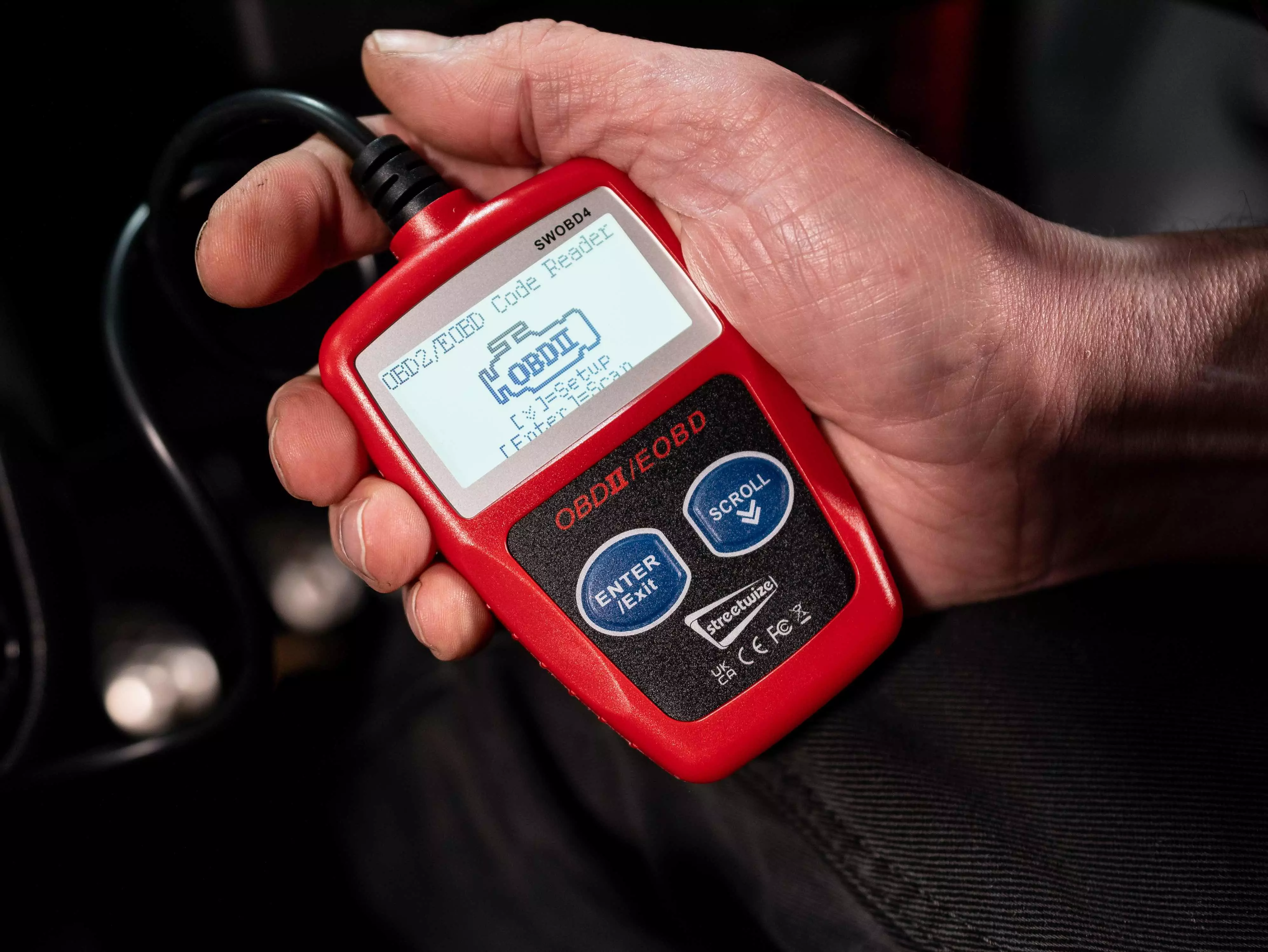
Streetwize Multilingual Large Screen OBDII Code Reader, £49.99 from Streetwize Accessories
✅ Freeze frame
✅ Performs basic functions
❌ Bit pricey
❌ Not for hybrid cars
As with the Laser, we’d recommend shopping around for the Streetwize OBD fault code reader, because £50 seems a fair bit to pay for something with basic functionality (it's had a price rise since we tested it, too). A lower price would have had us reaching for a Haynes Recommended award.
This OBD scanner’s screen isn’t the smallest in this test (it might be billed as having a large screen but it's only 2.4cm high and 4.8cm wide), but there’s no live data function, although there is freeze frame and VIN check on 2002 and newer vehicles. There’s also a printed manual in the box, although it doesn’t take long to work out what the menus do.
Interestingly, the packaging made it clear that the Streetwize code reader "is NOT compatible with hybrid or electric vehicles". We can understand why the latter isn't covered, but it's a shame that hybrids aren't.
“It seems to be the same as the Clarke tester in a slightly different housing. Basic, but effective,” says Martynn.
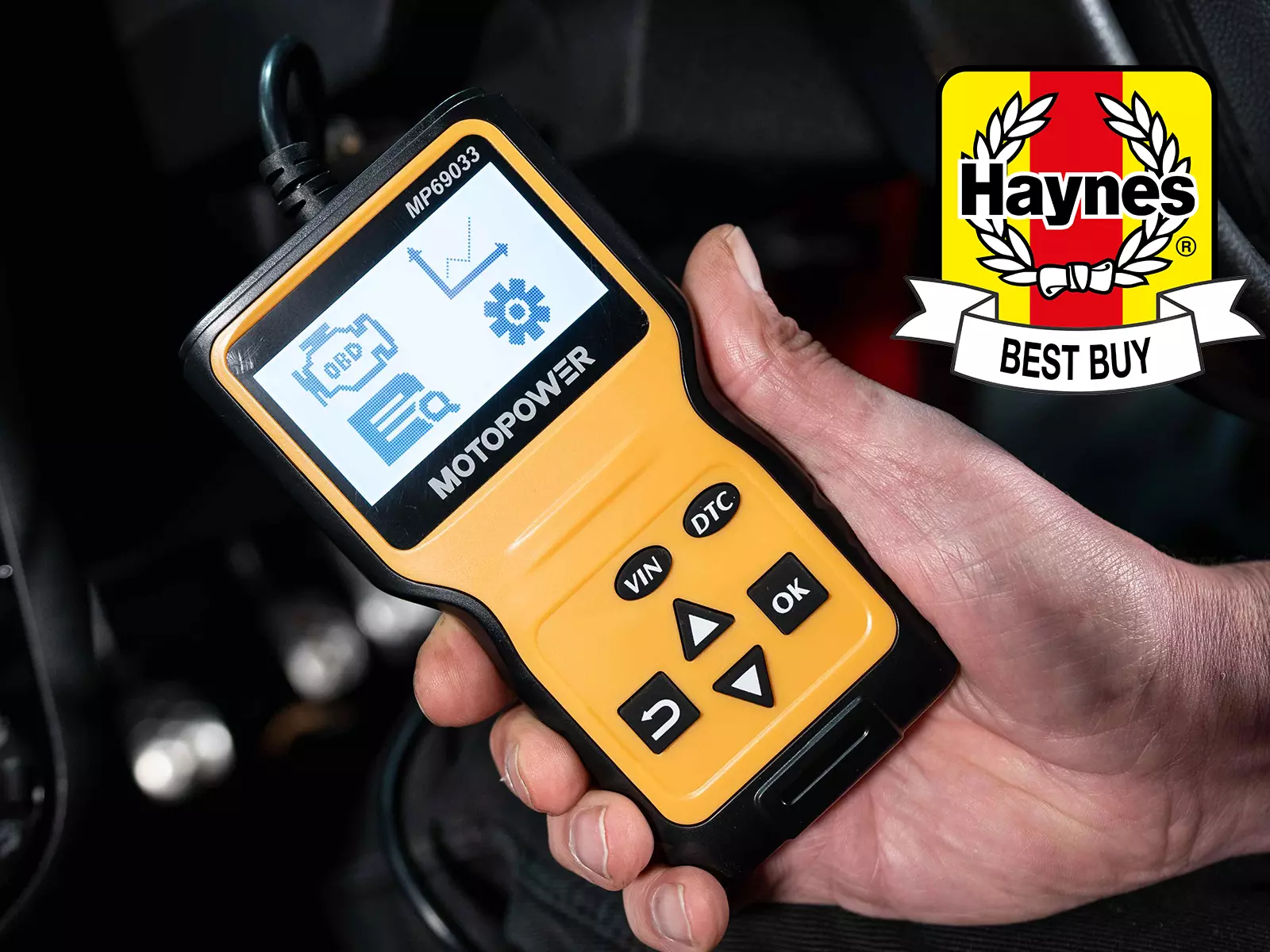
Motopower OBD2 Scanner, around £22.00 from Amazon
✅ Good value
✅ Decent-sized screen
✅ Good number of features
❌ Very little to criticise at this price
We didn't have high expectations of the lowest-priced ‘wired’ OBD scanner in this test, but the Motopower OBD2 Scanner was a pleasant surprise, with a decent amount of screen real estate for information and an intuitive menu system.
As with most of the code readers in this test, it comes with an instruction book, but it wasn’t really necessary because it doesn’t take long to find out what does what.
We particularly liked the clear display and the ‘back’ button that saves you having to start from the top again. The Motopower also features freeze frame and realtime curve, which displays sensor data in graph form, plus VIN check.
Martynn says: “My favourite. Easy to use, attractive to look at and a bargain - I may actually buy one!”
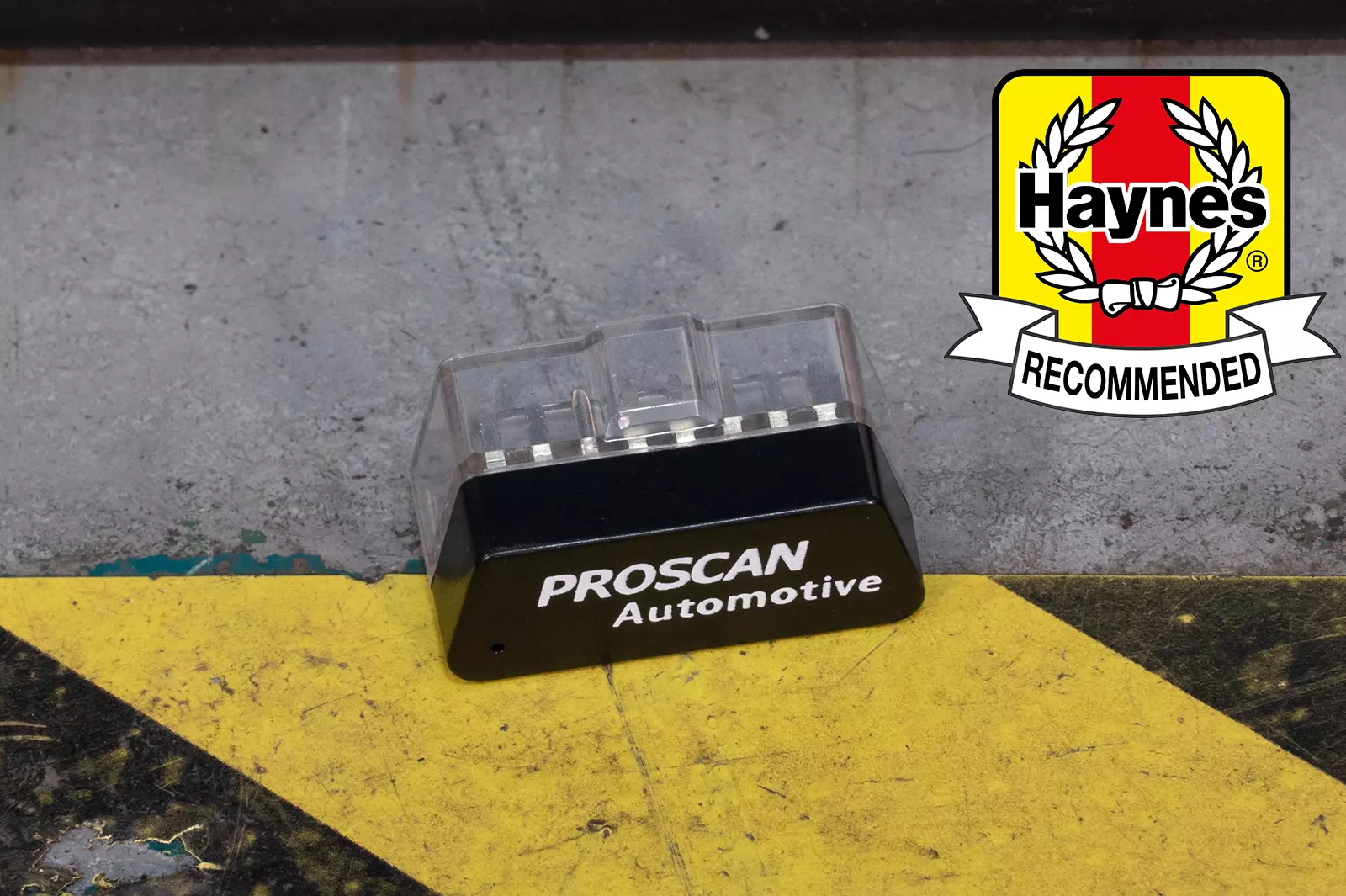
iCAR Pro Scan, £14.95 from eBay
✅ Cheapest code reader here
✅ Vehicle performance data while you drive
❌ Initial Bluetooth gremlins
❌ May take a while to find the best app to use with it
So if the cheapest wired scanner – the Motorpower – is capable of scooping top honours, can the lowest-priced device in this test also achieve great things?
The iCAR Pro Scan is about as low as you can go, price-wise, when shopping for a car fault code reader. Bluetooth OBD scanners consist of a dongle you plug into the EOBD port. You then download a suitable app to your smartphone, which in this case communicates with the dongle via Bluetooth 4.0 and you view the data on your phone’s screen.
With the dongle plugged into the EOBD socket, we had a little trouble getting our iPhone to talk to the iCAN, which may have had something to do with the various recommended free apps we tried before settling on Car Scanner (also available for Android phones). However, once it was up and running, it worked well, with memory and freeze frame functions to give you a snapshot of data from components or sensors that’s captured when the DTC – diagnostic trouble code – is recorded by the car’s ECU.
You also get live data, plus vehicle performance data via the phone’s GPS system, so you can leave it plugged into the OBD socket while you’re driving. A memory function allows you to compare the current scan results to previous ones.
At just under £15, including postage, the iCAR Pro Scan is excellent value for money. Just bear in mind that you need to use a good app to get the best out of it. We also had trouble removing the dongle from the Corsa’s enclosed OBD port, which had very little room for fat fingers!
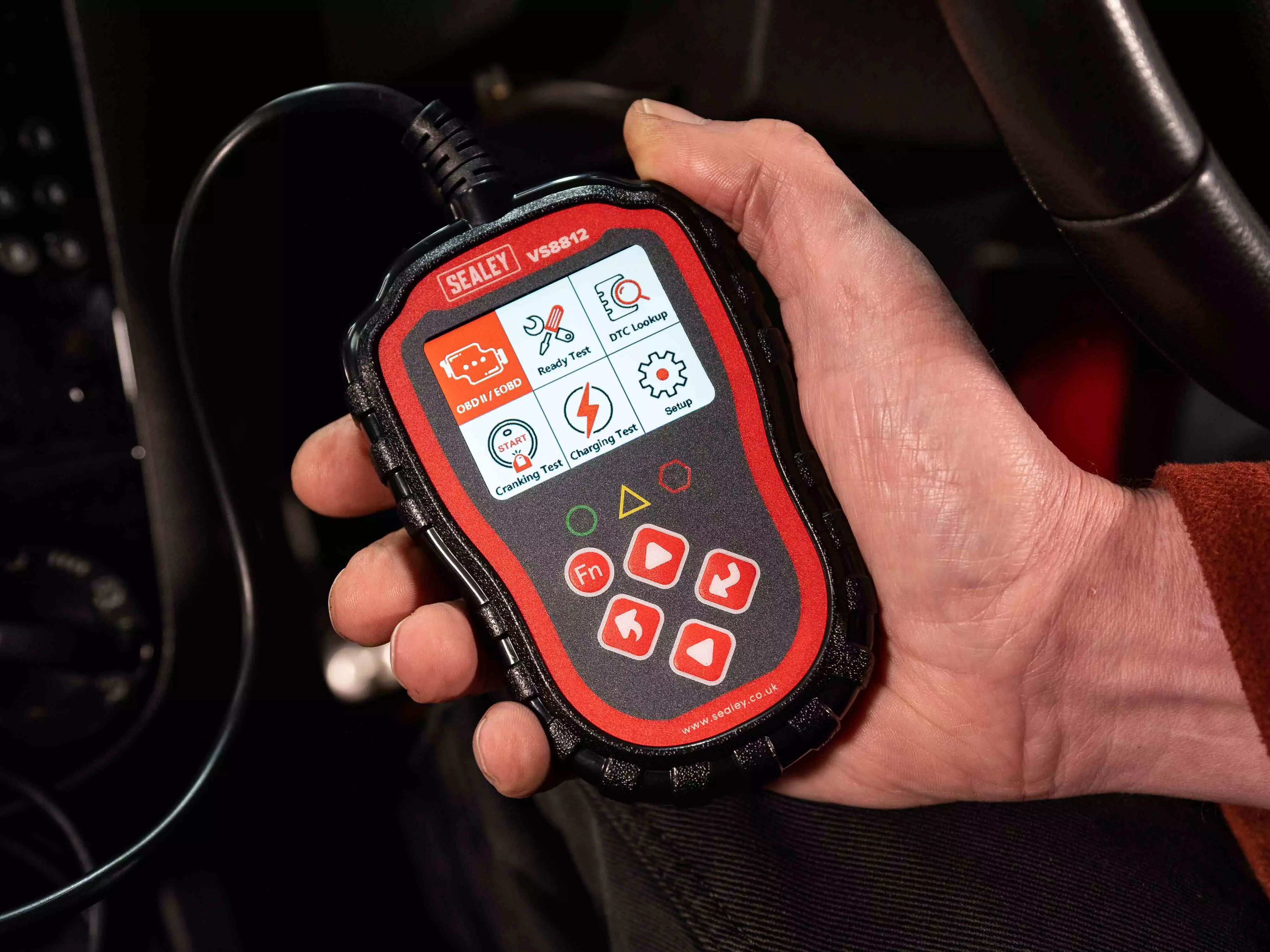
Sealey EOBD Code Reader (VS8812), £87.54 from Sealey
✅ Extra features
✅ Good build quality
❌ Pricey
❌ Tricky menu navigation
Despite featuring an intuitive colour menu, the Sealey EOBD Code Reader required a lot of button-pushing to get from one category to another, with the up and down buttons also having to be used to go left and right.
It’s not cheap, either, at close to £90 when bought from Sealey (so shop around), but it comes with a few extra features, including a dedicated vehicle charging system test feature, live data, VIN check, freeze frame and more. Still, the Sealey's RRP rules it out for an award it in this test.
“Rugged, good quality hardware, with some useful functions: charging/starter check dedicated tests,” says Martynn.
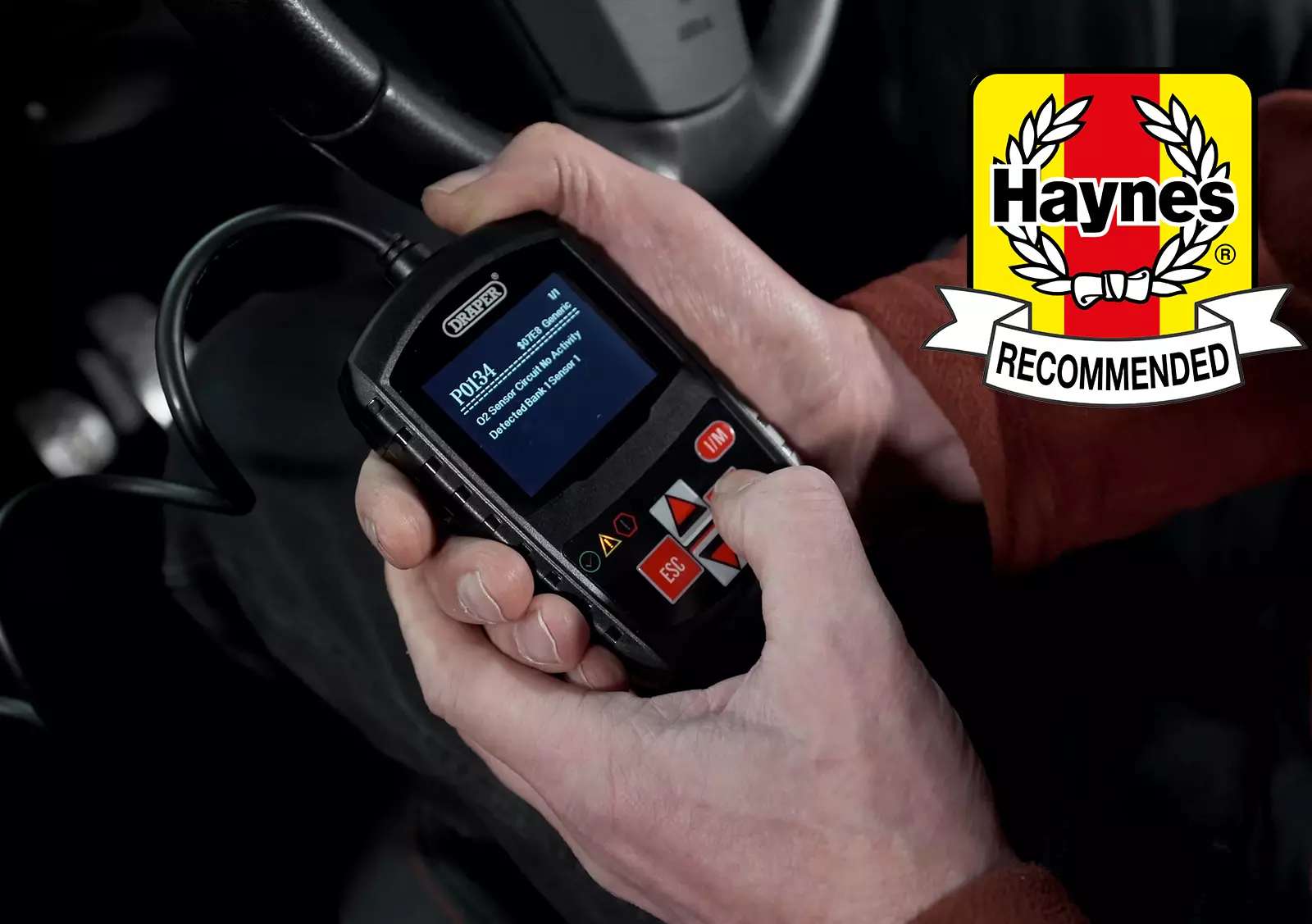
Draper Fault Code Reader (81163), £N/A
✅ Good build quality
✅ Extra features
❌ One of the pricier scanners
❌ Beeping (can be muted)
❌ Now discontinued
Out of the box, Draper’s cheaper OBD reader here has a rather annoying beep on every button press. Fortunately this can be turned off in the system set-up menu.
Once you’ve done that you’ll enjoy using the decent-sized screen and intuitive menus, which give you a vehicle ID check, VIN check, ECU software version, live data, tool self-test and a USB lead that lets you update the code reader’s firmware.
As with its bigger brother, Mode 6 gives you additional system monitoring and you can access information on the emissions control systems.
Draper has a good reputation for making products that stand the test of time, and we have no reason to doubt this code reader's staying power; at the time of testing it was one of the pricier offerings here, but deserves its Haynes Recommended award.
“Good quality hardware, as you expect from Draper,” says Martynn.
Sadly, this model has been discontinued, so your only option now is to search for a second-hand unit.
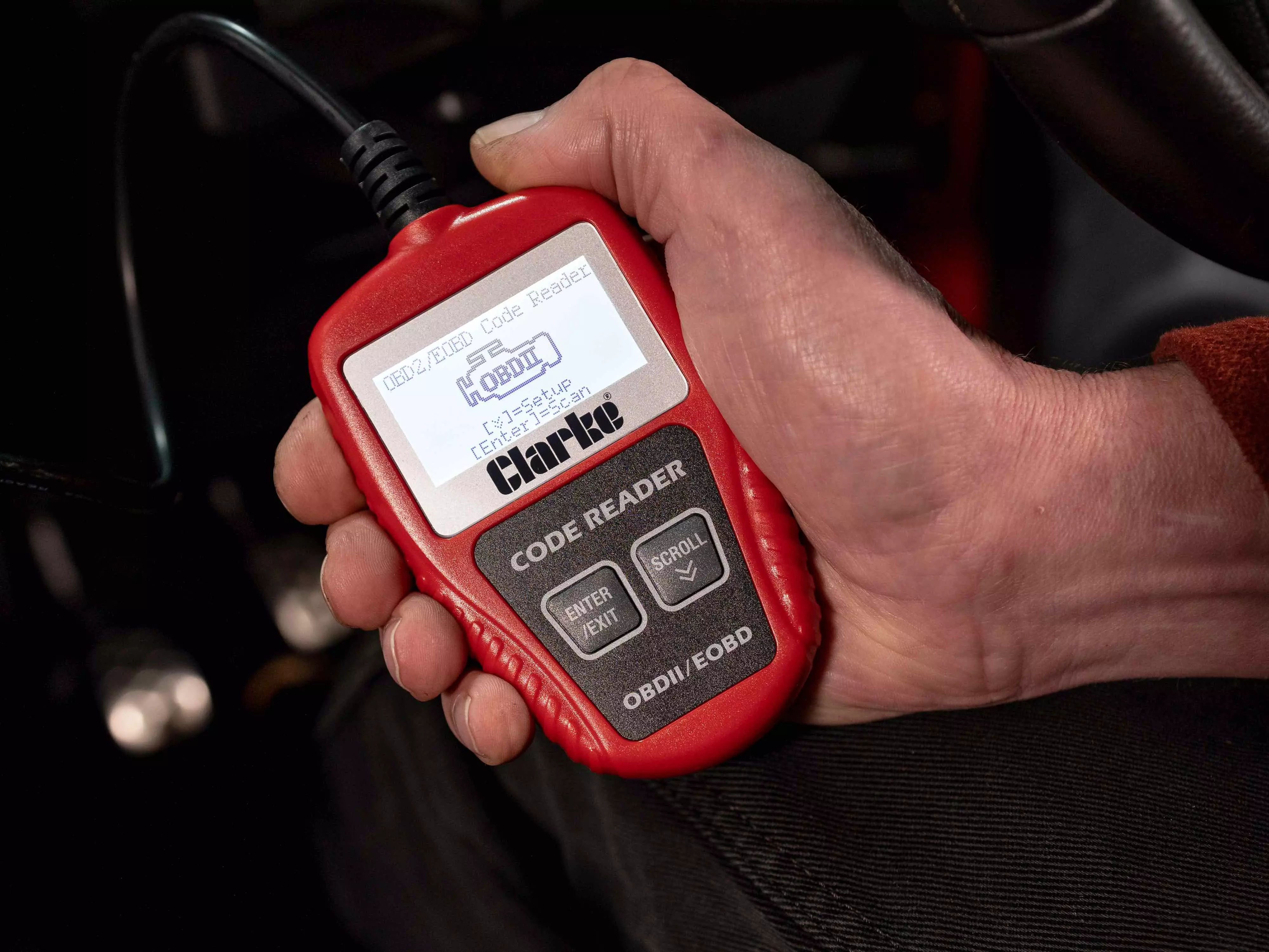
Clarke CEOBDS Engine Fault Code Reader, £48.17 from Clarke Tooling
✅ More features than the similar Streetwize
✅ Emissions options
❌ Fiddly controls
❌ Smallish screen
One thing you’ll quickly discover when shopping for fault code readers is that some use very similar menu systems but have different branding.
This Clarke OBD scanner appears to be related to the Streetwize but adds live data to the freeze frame and VIN check functions, and provides some insight into the readiness of emissions control systems.
The controls are a little minimalist (scroll and enter/exit – the same as the Streetwize’s), as Martynn notes: “It’s basic, with only two buttons, so navigation takes a bit of getting used to.”
The Clarke might have been in the running for an award if it had come in at less than £40.
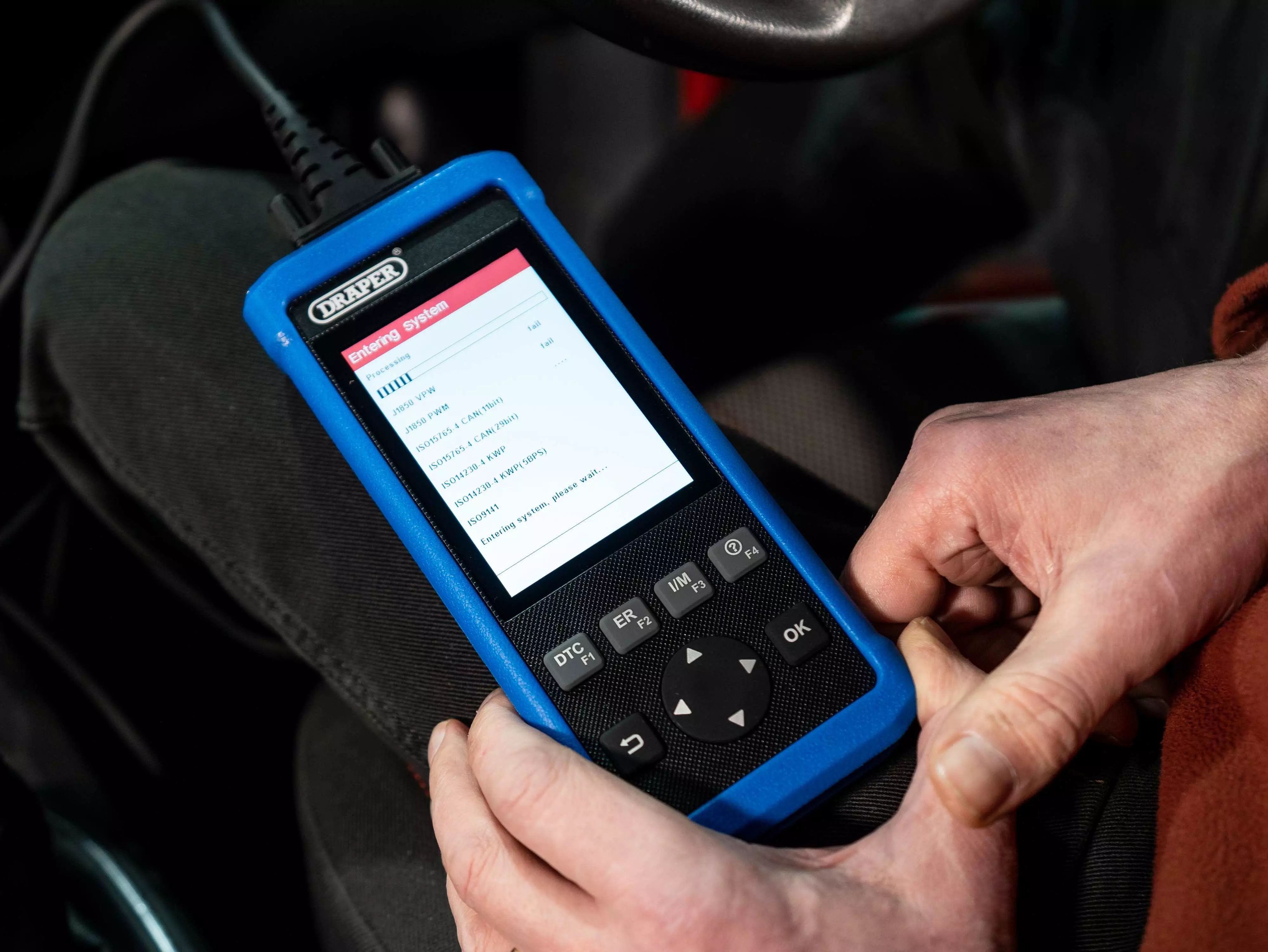
Draper Fault Code Reader and Oil Reset Tool (12045), £243.84 from Draper
✅ Feature-packed
✅ Large, easy to use screen
❌ Priciest unit here*
❌ Too many features for some users
At the time of testing, the the Draper Fault Code Reader and Oil Reset Tool was nearly 20 times the price of the iCAR Bluetooth scanner in this test, and is a different beast aimed at a different audience. But we wanted to include it to demonstrate what code readers can do if you have the cash burning a hole in your pocket.
It has all of the features of the other offerings in this test and displays monitor and I/M readiness status (which provide insight into the car’s emission control systems), O2 sensor info and evap system tests capabilities (mostly concerns US models with a charcoal canister to trap and store fuel vapours).
It also has permanent code retrieval, on-board monitor test (Mode 6, for additional component/system monitoring), reads fault code pending data, DTC code lookup function and lets you reset the oil change indicator.
This reader’s large colour display looks like it should be a touchscreen, but it’s not. However, the physical buttons make navigation a cinch.
“This one has the highest quality feel that makes it suitable for everyday professional use,” said Martynn. But you’d need to be sure you’re going to make use of all this pricey model’s features to make it worthwhile.
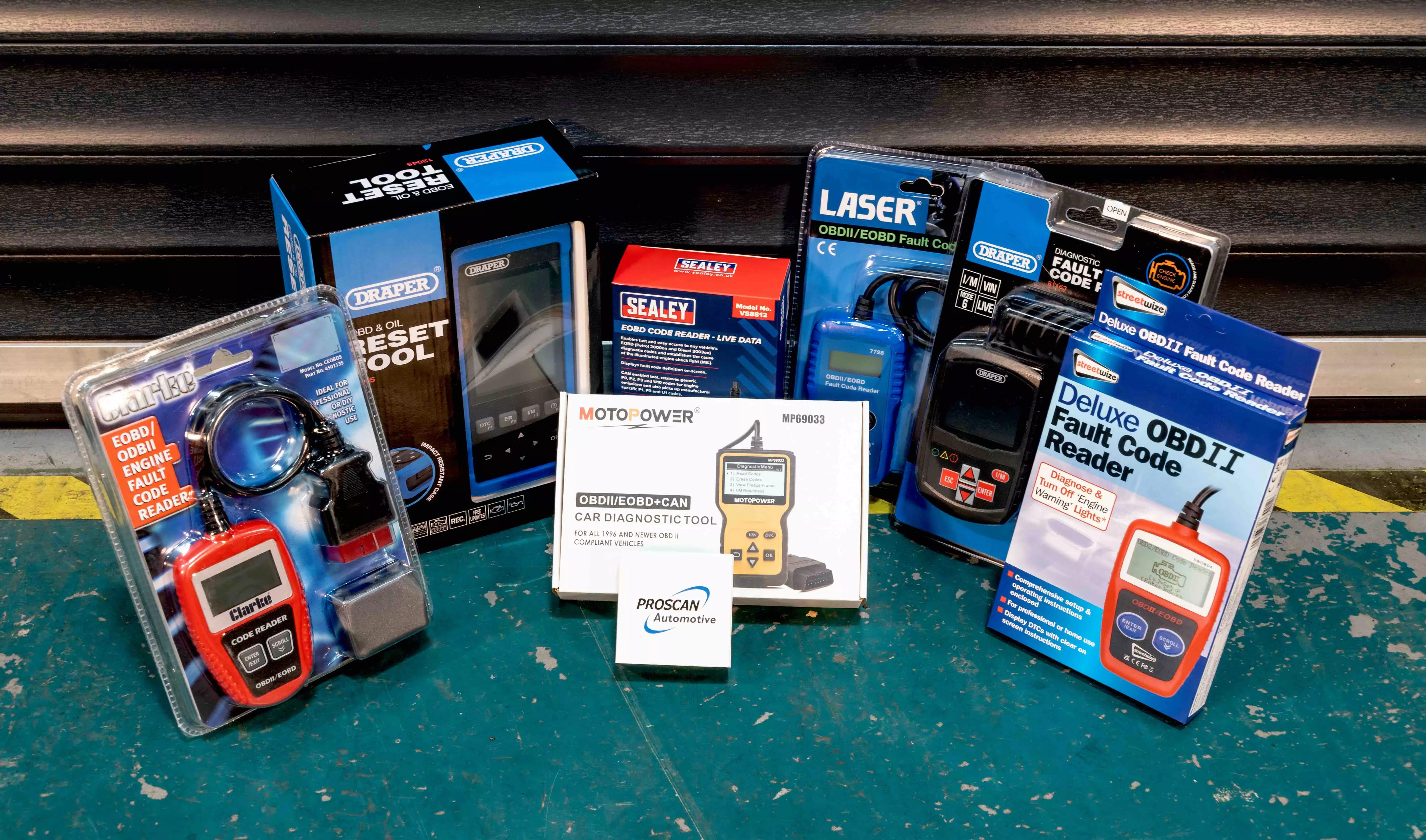
OBD scanners: the Haynes verdict
Buy any of the eight EOBD readers in this test and you're likely to be happy with what they tell you about your car.
Three stand out as being particularly good, though, with the Motorpower OBD2's low price, features and good-sized screen helping it to bag our Best Buy award.
Draper's Fault Code Reader has a better build quality and has more features than the Motopower, but it's only available second-hand now.
We also recommend the cheapest device in this test – the iCAR Pro Scan, at £15 – because it can be left plugged into your car's EOBD socket and used to display ongoing engine performance data as you drive around (as long as your phone is safely secured in a holder and you're not using it on the move).